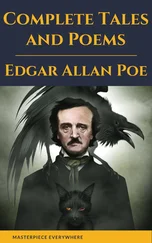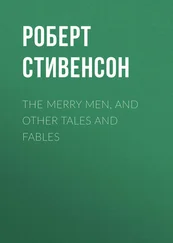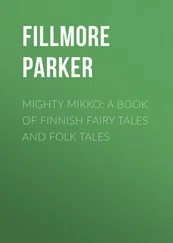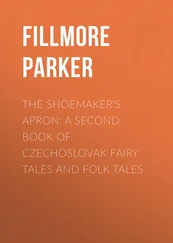Gustavo Bécquer - Legends, Tales and Poems
Здесь есть возможность читать онлайн «Gustavo Bécquer - Legends, Tales and Poems» — ознакомительный отрывок электронной книги совершенно бесплатно, а после прочтения отрывка купить полную версию. В некоторых случаях можно слушать аудио, скачать через торрент в формате fb2 и присутствует краткое содержание. Жанр: foreign_prose, literature_19, foreign_antique, на английском языке. Описание произведения, (предисловие) а так же отзывы посетителей доступны на портале библиотеки ЛибКат.
- Название:Legends, Tales and Poems
- Автор:
- Жанр:
- Год:неизвестен
- ISBN:нет данных
- Рейтинг книги:5 / 5. Голосов: 1
-
Избранное:Добавить в избранное
- Отзывы:
-
Ваша оценка:
- 100
- 1
- 2
- 3
- 4
- 5
Legends, Tales and Poems: краткое содержание, описание и аннотация
Предлагаем к чтению аннотацию, описание, краткое содержание или предисловие (зависит от того, что написал сам автор книги «Legends, Tales and Poems»). Если вы не нашли необходимую информацию о книге — напишите в комментариях, мы постараемся отыскать её.
Legends, Tales and Poems — читать онлайн ознакомительный отрывок
Ниже представлен текст книги, разбитый по страницам. Система сохранения места последней прочитанной страницы, позволяет с удобством читать онлайн бесплатно книгу «Legends, Tales and Poems», без необходимости каждый раз заново искать на чём Вы остановились. Поставьте закладку, и сможете в любой момент перейти на страницу, на которой закончили чтение.
Интервал:
Закладка:
c. Two contiguous vowels after the accented syllable.
(1) Two contiguous strong vowels after the accented syllable naturally form a diphthong.
Ex. Tú, sombra aére^a que, cuantas veces , p. 170, XV, l. 7.
Diaeresis may be employed to dissolve the diphthong.
(2) If a strong vowel is followed by a weak vowel after the accented syllable, they form a diphthong, e.g. hablaba^is, amara^is .
This diphthong is easily dissolved.
(3) If a weak vowel is followed by a strong vowel after the accented syllable, they form a diphthong, e.g. histor^i^a, ans^i^a .
Ex. De la brisa nocturna al tenu^e soplo , p. 192, LXXV, l. 6.
The diphthong may, however, be dissolved, e.g. estatu|a, tenu|e, nadi|e .
If three vowels belonging to the same word are contiguous, one of them must be accented. There are then three possible arrangements.
(i) Three contiguous vowels of a word with the accent on the first, e.g. tráeos .
(ii) Three contiguous vowels of a word with the accent on the second, e.g. creia, buey .
(iii) Three contiguous vowels with the accent on the third, e.g. rehuí .
Each of the above arrangements has two combinations of accented and unaccented vowels to which the rules for diphthongs may be applied. In (i) there will be a combination of two vowels with the first accented, plus a combination of two vowels after the accent. In tráeos , for example, the a and e would probably be in separate syllables by b (1) (a), and eo would probably form a diphthong by c (1). Tráeos would, then, probably be a dissyllable.
In (ii) there will be a combination of two vowels with the accent an the second, and one of two vowels with the accent on the first. In creia, for example, the e and í would be in separate syllables by b (2) (b), and the í and a would probably be in separate syllables also by b (2)(a). Therefore, creia would probably be a trisyllable. In cambiáos the i and á might form one syllable or two by b (2) ( d ), and the á and o would probably be in separate syllables by b (1) (a). Therefore, in cambiáos the combination iáo might form a dissyllable or a trisyllable.
In (iii) there will be a combination of two vowels before the accent, and one of two vowels with the second accented. In rehuí , for example, the e and u might be in the same syllable by a (1), or in separate syllables by dieresis by a (1) (a), and the u and í might be in separate syllables or not by b (3) (b). Therefore, rehuí might be a monosyllable, a dissyllable, or a trisyllable.
Other combinations of three vowels may be analyzed in a similar way, as may also combinations of more than three vowels, e.g. creíais , etc.
Between the contiguous vowels of separate words there may occur synalepha (which corresponds to diphthongization within a word), or hiatus (which is similar to diaeresis within a word).
Ex. Abre^una^eternidad , p. 178, XXXVI I, l. 22. ¿Á qué me lo decís? lo sé^:^es mudable , p. 179, XXXIX, l. 1. [Synalepha.]
Ex. Como la onda^azul, en cuya cresta , p. 173, XXVII, l. 16. [Hiatus.]
The vowels contracted by synalepha are each pronounced, except when the same vowel is repeated, when only a prolonged sound is heard, as in onda^azul or sé^es above.
Synalepha may join into a single syllable two, three, four, and even five vowels. The union of two vowels (diphthongal synalepha) and the union of three vowels (triphthongal synalepha) are the most common.
A pause due to a break in sense does not prevent synalepha. Mute h is disregarded in the verse and does not prevent synalepha.
Ex. Capaz de encerrarlo, y apénas ¡oh^hermosa! p. 164, I, l. 10.
1. DIPHTHONGAL SYNALEPHA
a. Synalepha takes place between two contiguous unaccented vowels belonging to separate words.
Ex. Abre^una^eternidad , p. 178, XXXVII, l. 22.
b. Synalepha occurs when the final vowel of the first word is accented.
Ex. Te ví^un punto, y, flotando ante mis ojos , p. 169, XIV, l. 1.
c. Synalepha usually occurs when the initial vowel of the second word is accented, especially when the first word ends in a weak vowel, and also in the combinations aá, oá, oa, eá, eó, eé.
Ex. Me parece^en el cielo de la tarde , p. 169, XIII, l. 11.
NOTE: Synalepha is possible with the other combinations, but hiatus is preferable even with the above combinations, in a syllable on which the rhythmical accent falls (see under Rhythmic Accent).
Ex. Despierta, hablas, y al hablar, vibrantes , p. 174, XXVII, l. 23.
Ex. Como la ola que á la playa viene, p. 178, XXXVII, l. 19.
2. TRIPHTHONGAL SYNALEPHA
a. There is always triphthongal synalepha when a is the middle vowel; or when o or e is the middle vowel, except in the following combinations, aoa, aoo, ooo, aea, aeo, oea, oeo.
Ex. Silenciosa á expirar , p. 178, XXXVII, l. 20.
b. There is never triphthongal synalepha when an accented weak vowel stands between two strong vowels. Therefore the conjunctions y and ú prevent triphthongal synalepha.
Ex. Y de purpura y oro la matiza , p. 168, IX, l. 4.
c. There may be triphthongal synalepha when í (y) is the middle vowel, if u precedes it, or i follows it.
Ex. Fuí diestro, fuí valiente, fuí arrogante . Cervantes.
d. When u is the middle vowel there may be synalepha if i follows it. The construction is very rare.
e. There is no synalepha with a word beginning with hue.
Ex. Mucho nuestro huesped tarda . Tirso de Molina.
f. In the following cases the groups of vowels which would usually make triphthongal synalepha are pronounced in two syllables:
(1) When the first word of the group ends in two vowels which do not form a diphthong.
Ex. Que aún tení|a^abiertos , p. 187, LXXIII, l. 2.
(2) When the two initial vowels of the second word do not form a diphthong.
Ex. Tú, sombra^a|érea que, cuantas veces , p. 170, XV, l. 7.
(3) When the first word ends in a diphthong and the second begins with a vowel in a constituent syllable (i.e. a syllable on which the rhythmical accent falls).
Ex. Tan gran designio honra tus audacias.
If the accented vowel is not in a constituent syllable synalepha may occur.
Ex. Mientras la cencia á descubrir no alcance , p. 165, IV, l. 13.
(4) When the first word ends in a single vowel, and the second word begins with a diphthong in a constituent syllable.
Ex. Tú, proceloso austro que derribas .
(3) and (4) might well be considered as cases of hiatus.
3. SYNALEPHA BETWEEN FOUR OR MORE VOWELS
This is less common, yet it exists.
Ex. No^h^a^y^amor donde no hay celos . Lope de Vega.
4. HIATUS
Hiatus is most frequently found between words having a close syntactical relation, particularly if the initial vowel of the second word is in a constituent syllable. It may occur between the article and its substantive, the possessive adjective and its substantive, a preposition and its object, the negatives no and ni and a following vowel; and after the conjunctions y, que, si , and other words having a weak accent such as desde, coma, todo, otro, cuando , etc.
Hiatus is most likely to occur when the accented vowel is the initial vowel of the final word in a phrase or verse, or of a word that has a strongly accented position in the verse; as, for example, when the syllable is the next to the last syllable in a verse, or is the fourth or eighth syllable of a hendecasyllabic verse of the second class.
Читать дальшеИнтервал:
Закладка:
Похожие книги на «Legends, Tales and Poems»
Представляем Вашему вниманию похожие книги на «Legends, Tales and Poems» списком для выбора. Мы отобрали схожую по названию и смыслу литературу в надежде предоставить читателям больше вариантов отыскать новые, интересные, ещё непрочитанные произведения.
Обсуждение, отзывы о книге «Legends, Tales and Poems» и просто собственные мнения читателей. Оставьте ваши комментарии, напишите, что Вы думаете о произведении, его смысле или главных героях. Укажите что конкретно понравилось, а что нет, и почему Вы так считаете.












